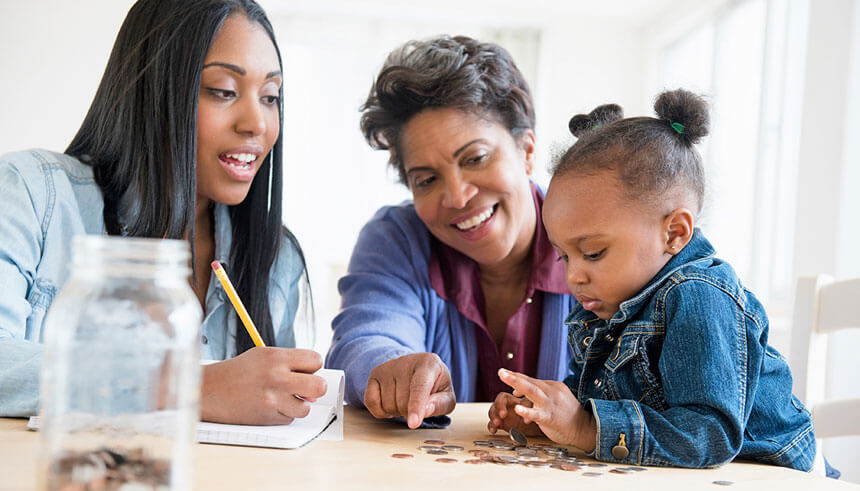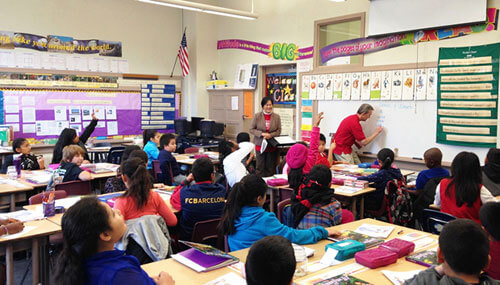East West Lifestyle
Helping Children Prepare for a Healthy Financial Future

Teaching your child early to be responsible with money can pay off the rest of their life.
It only takes a moment to realize the benefits of nurturing financial literacy in a young person. Think about it. Teaching children from a young age about the importance of spending, saving, and earning provides an empowering baseline for their growing into financially responsible adults. “Starting young means building a healthy relationship with money. It can be one of the most empowering tools or one of the most frustrating tools in life,” says Krista Neeley, regional vice president of Appreciation Financial in Houston, Texas.
As children grow into young adults, they are faced with numerous financial challenges, including potentially crippling student loans, and navigating high-interest predatory credit lenders, who frequently target young people. If they escape these challenges, there are still important lessons like paying for college, taking out a loan for a car, or even a mortgage. Without the skills, it can be easy to make mistakes.
Never too early to start
Even primary age children can benefit from basic financial teachings from their parents. When Brannon Lambert from Raleigh, N.C., wanted to begin teaching his then five-year-old daughter about money, he offered her a way to earn it. “We have two large pine trees in the front yard that constantly drop big pine cones everywhere,” he shares. “One day I offered her 10 cents each to pick them up so I could mow the yard. $36.70 later, the yard was clear. She hated the pine cones, but she liked earning the money.”

“We know our kids will make plenty of mistakes with this money, and that is exactly the point. We want them to make mistakes and get these lessons young, so they aren’t making them when the stakes are much higher.”
The new “job” for his daughter was a way for her to earn money on a regular basis. “I would intentionally pay by check, and we would take the money to the bank to deposit,” Lambert says. “The one difference with money she has earned is the option to keep 10-20 percent to spend if she desires.”
Blogger, author and mom Lindsay McCartney says her family has found success in teaching money to their four- and eight-year-old by instituting an allowance system. “They each get $15 a week. We then split that money into three categories. They get $7 to spend, $5 to save and $3 to give. As entrepreneurs, we want our kids to get used to paying themselves first, so 30 percent goes immediately to savings. This is not about saving up for something bigger that they want, but to save to invest later or in case of an emergency,” she shares. “If they want to save up for something, they need to save it from their ‘spend’ money. We wanted to also develop a sense of compassion in our kids, so we have them set aside a small amount to give each week.” She adds: “Once they have saved up some money in that jar, they can donate it to a cause of their choosing. We know our kids will make plenty of mistakes with this money, and that is exactly the point. We want them to make mistakes and get these lessons young, so they aren’t making them when the stakes are much higher.”
Start simple
Opening bank accounts can help children learn to budget, balance a checkbook, or save for an important, future expense. Lambert’s daughter, for example, who turns nine in December, endorsed her first check when she was just seven years old. “The first financial document most kids sign these days is either a check (to spend money) or credit card application (to spend money they don’t have),” he says. “I want her in the habit of putting money away, not spending it. I also want her to understand the process. When she gets checks for her birthday or Christmas, I have her sign the checks. She also fills out the deposit tickets. When she takes checks with her passbook to the bank, she gets to see her account balance grow.” When children get older, parents could consider giving them access to a low-balance credit card, recommends Bradford D. Creger, AAMS, CFS, CLTC, CPFA, president and CEO of Total Financial Research Group in Glendale, Calif.
Children without access to financial literacy at home

"Financially savvy role models include children in discussions of healthy spending and saving habits, and introduce children on how bank products and services work."
Not all children come from families who can provide an allowance, initial deposits for checking accounts, or credit cards. There are families that may not be comfortable discussing money with their children, or they may not understand the dividends that can come from healthy conversations about money with children. “From my experience and interactions, the level in which children pay attention to financial matters is highly dependent on those around them,” says James Chen, the Western area president for Operation HOPE, a nonprofit specializing in teaching financial literacy to young people, especially those in “at-risk” communities. “Financially savvy role models include children in discussions of healthy spending and saving habits, and introduce children on how bank products and services work. Conversely, role models who lack the financial knowledge have a missed opportunity to financially prepare children for what’s to come,” he says. “Recently, I was in a third-grade classroom observing a volunteer teaching Banking on Our Future [a program run by Operation HOPE], and one of the students asked the volunteer if she could talk about credit score. I was pleasantly surprised and, after some probing questions, it was discovered that her parents were thinking of buying a home and the child had been listening in on the parent’s conversation.”
Operation HOPE, founded as America’s first nonprofit social investment banking organization in South Central Los Angeles, and supported by East West Bank, has helped over 2.5 million individuals, and directed more than $1.8 billion in private capital to America's low-wealth communities. Its volunteers number over 22,000 in more than 300 U.S. cities, as well as South Africa, Saudi Arabia, Morocco, and the United Arab Emirates.
All it takes is a conversation
According to a 2012 Financial Literacy Survey by the National Foundation for Credit Counseling, 56 percent of the adults surveyed did not have a household budget, and 40 percent admitted they have no idea what they are doing when it comes to personal finance. Where does that leave their children? Schools have stepped in to fill the gap. According to a report in the Wall Street Journal, 43 states now have some form of mandated financial education in the classroom. The National Endowment for Financial Education (NEFE), however, reports that only 11 percent of teachers have taken a workshop on how to teach personal finance, and over 60 percent say they “don’t feel qualified” to teach basic financial literacy. Nonprofits with a focus on financial literacy can be a huge help to schools, especially those serving at-risk communities and young people.
“Our HOPE Inside Youth Empowerment: Banking on Our Future division focuses on keeping the most at risk youth from repeating the cycles of poverty and despair that has trapped so many in their families and communities by teaching them basic financial literacy, or what we call ‘the global language of money,’” says Chen.
These classes are free-of-charge for schools and communities, and are led by volunteers who have undergone training in financial literacy and teaching techniques. To date, the Banking on Our Future Program has reached over 900,000 students in more than 3,250 schools and community-based organizations in the United States and South Africa. Chen says an education in healthy financial habits is a big part of a successful financial future.
“Regardless of age, one needs to understand needs versus wants, how to create a budget, how to navigate (and use) bank products and services, and learn responsible management of credit, as all these factors determine living a life with (or without) financial dignity,” says Chen. He adds that, despite the most difficult circumstances, with the right guidance from parents, guardians, and teachers, financial literacy is possible for children.
“Sometimes all it takes is a conversation,” says Chen. “One easy way for role models to teach financial literacy to young people is to simply include them in conversation when you’re thinking or talking about money (such as planning a vacation and sharing the details of the expenses), or demonstrating acts of financial habits, such as paying the bill, reading a credit card statement, or even determining your 401K/403b portfolio, and other forms of accounts.”
Subscribe to the Reach Further Newsletter
Get inspiring stories in your inbox every month.

